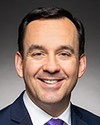I have the honour to inform the House that when the House did attend His Excellency the Governor General in the Senate chamber, His Excellency was pleased to give, in Her Majesty's name, the royal assent to certain bills:
C-321, An Act to amend the Canada Post Corporation Act (library materials)—Chapter 10, 2013.
C-37, An Act to amend the Criminal Code—Chapter 11, 2013.
C-383, An Act to amend the International Boundary Waters Treaty Act and the International River Improvements Act—Chapter 12, 2013.
S-9, An Act to amend the Criminal Code—Chapter 13, 2013.
C-309, An Act to amend the Criminal Code (concealment of identity)—Chapter 15, 2013.
C-43, An Act to amend the Immigration and Refugee Protection Act—Chapter 16, 2013.
S-213, An Act respecting a national day of remembrance to honour Canadian veterans of the Korean War—Chapter 17, 2013.
C-42, An Act to amend the Royal Canadian Mounted Police Act and to make related and consequential amendments to other Acts—Chapter 18, 2013.
S-209, An Act to amend the Criminal Code (prize fights)—Chapter 19, 2013.
S-2, An Act respecting family homes situated on First Nation reserves and matrimonial interests or rights in or to structures and lands situated on those reserves—Chapter 20, 2013.
S-8, An Act respecting the safety of drinking water on First Nation lands—Chapter 21, 2013.
C-63, An Act for granting to Her Majesty certain sums of money for the federal public administration for the financial year ending March 31, 2014—Chapter 22, 2013.
C-64, An Act for granting to Her Majesty certain sums of money for the federal public administration for the financial year ending March 31, 2014—Chapter 23, 2013.
C-15, An Act to amend the National Defence Act and to make consequential amendments to other Acts—Chapter 24, 2013.
C-62, An Act to give effect to the Yale First Nation Final Agreement and to make consequential amendments to other Acts—Chapter 25, 2013.
S-14, An Act to amend the Corruption of Foreign Public Officials Act—Chapter 26, 2013.
It being 4:24 p.m., the House stands adjourned until Monday, September 16, 2013, at 11 a.m., pursuant to Standing Orders 28(2) and 24(1).
(The House adjourned at 4:24 p.m.)
The first session of the 41st Parliament was prorogued by royal proclamation on September 13, 2013.



